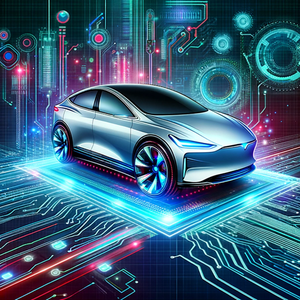For those of you concerned about the critical development of EV infrastructure, this is a big deal. Seven of the biggest global automakers have recently unveiled a collaborative initiative to establish an extensive electric vehicle (EV) charging network across North America. This network will be accessible to all and will comprise an impressive 30,000 CCS and NACS chargers. The first chargers are expected to be operational by the summer of 2024.
In a world where the idea of "sharing is caring" often ends at kindergarten, these seven automakers are taking it to a whole new level. They're putting aside brand rivalries and aligning their charging cables for a common cause - a massive electric embrace that will power up our EV future. It's a bit like the Super Friends of the auto world coming together to combat range anxiety, one plug at a time. So, buckle up folks, the EV revolution is not just charging, it's supercharging!
According to recent reports, BMW, Mercedes, GM, Honda, Hyundai, Kia, and Stellantis have announced their plan to install a minimum of 30,000 high-powered charging points in urban and highway areas to enable their customers to charge their vehicles at any time and anywhere they need.
The upcoming charging stations will support both the widely used CCS and the increasingly popular Tesla NACS standard, providing both AC and higher-voltage DC charging capabilities.
The initial stations are set to launch in urban markets during the summer of 2024. These stations will be accessible to all-electric vehicle (EV) customers, regardless of the manufacturer. However, important details such as billing, access, and maintenance, which currently pose significant challenges to the charging network, were not mentioned. At this stage, executives have primarily made high-level statements without going into specifics.
“The fight against climate change is the greatest challenge of our time,” said Mercedes-Benz Group CEO Ola Källenius. “What we need now is speed—across political, social, and corporate boundaries. To accelerate the shift to electric vehicles, we’re in favor of anything that makes life easier for our customers. Charging is an inseparable part of the EV experience, and this network will be another step to make it as convenient as possible.”
“North America is one of the world’s most important car markets—with the potential to be a leader in electromobility,” said BMW Group CEO Oliver Zipse. “Accessibility to high-speed charging is one of the key enablers to accelerate this transition. Therefore, seven automakers are forming this joint venture with the goal of creating a positive charging experience for EV consumers. The BMW Group is proud to be among the founders.”
Ensuring user-friendly and convenient network access with seamless payment options is a top priority. In the future, charging hubs may also offer amenities such as canopies and food while vehicles are being charged. If you have ever encountered a random charging station in a remote location, you may have experienced the need to download an app, input credit card details, make calls to a sometimes-unreliable 800 number, and engage with customer service representatives from various locations just to obtain a few kilowatt-hours of energy.
“The better experience people have, the faster EV adoption will grow,” said General Motors CEO Mary Barra.
The funding for this new network raises questions about its source. While it remains uncertain whether carmakers will receive direct funding from the $5 billion US National Electric Vehicle Infrastructure (NEVI) program, which is part of the Infrastructure Investment and Jobs Act, it is also unclear if the carmakers alone will finance the network, or if a combination of both sources will be utilized.
“The Joint Venture will evaluate options to work with local governments and available public funding to help enable the set-up of the network,” said a Honda spokesman.
As the number of electric vehicles (EVs) continues to grow globally and across North America, it is expected that there will be an increase in the availability of charging stations. According to the International Energy Association, in 2022, approximately 14% of new cars sold were electric, a significant increase from 9% in 2021 and less than 5% in 2020. The United States, ranked as the third largest market for EVs worldwide, after China and Europe, experienced a 55% increase in EV sales last year, reaching a sales share of 8%. In fact, the US is projected to potentially sell a million electric cars in 2023. Therefore, the availability of charging infrastructure is crucial to support this growing market.
For More Coverage About This Development
- Seven Automakers Unite to Create a Leading High-Powered Charging Network Across North America
- Major automakers to build new nationwide electric vehicle charging network
- These 7 Carmakers Will Jointly Build Giant Network of 30,000 EV Chargers
Where to find more information about EV Infrastructure Developments
- SAE Sustainable Mobility Solutions - Sustainable Mobility Solutions brings together cutting-edge research, training, and expertise to tackle pressing problems in transportation.
- ChargePoint: Explore more about electric vehicle charging services.
- Electrify America: Visit for more information on America's largest open DC fast-charging network.
- Tesla Supercharger Network: Discover more about Tesla's specific charging network.
- U.S. Department of Energy: Understand home charging of electric vehicles.
- International Energy Association: Get more global statistics about electric vehicles and their infrastructures.



